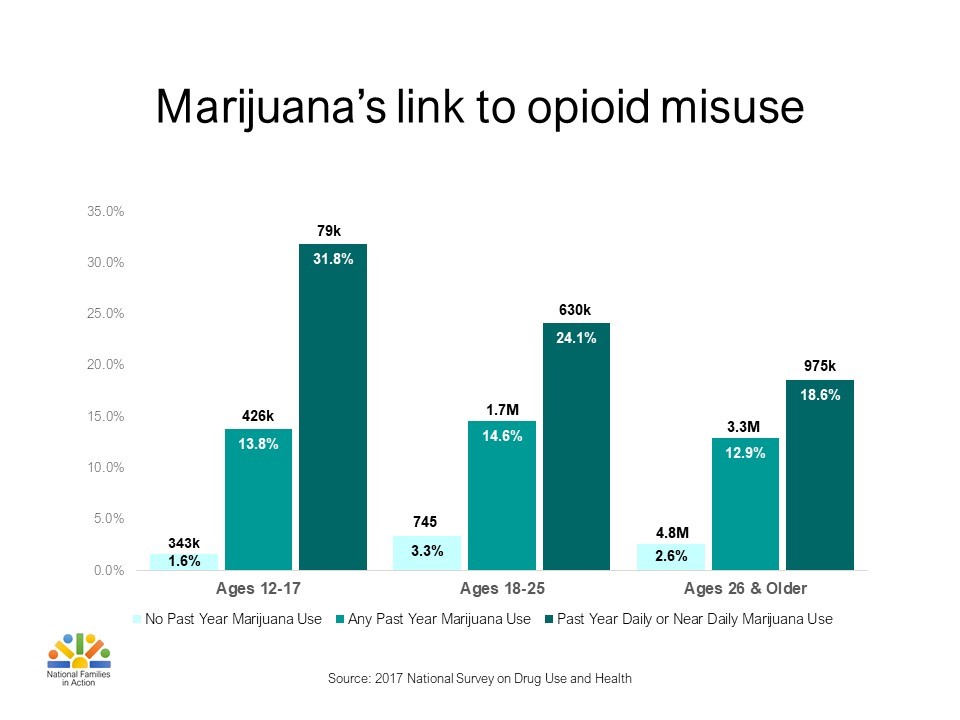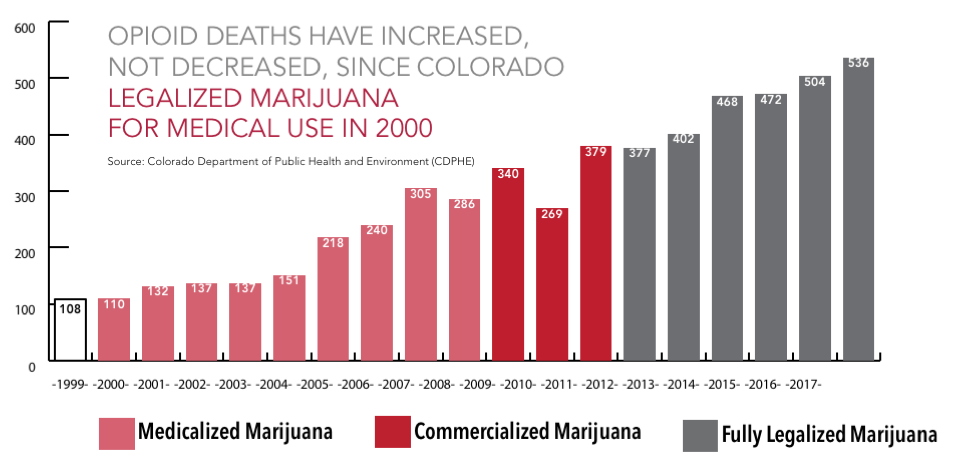Drug advocates in New Zealand try to argue that by legalising marijuana, the use of synthetic cannabis and other natural opioids would decrease.
But the international evidence quashes those hopes. Research is revealing that individual marijuana users are at much higher risk for developing opioid use disorders, and that population studies claiming a correlation between state marijuana legalisation and reduced opioid deaths have serious deficiencies. Better studies are now showing marijuana is a risk factor in the increased non-medical use of opioids.
An American published in September 2017 of over 30,000 Americans showed that participants who reported marijuana use in the previous year were 2.6 times more likely to abuse prescription opioids:
“Cannabis use appears to increase rather than decrease the risk of developing nonmedical prescription opioid use and opioid use disorder.”
It seems fairly logical that we should NOT be encouraging marijuana use if our goal is to stop addiction. NZ already has an addiction epidemic with synthetic cannabis and methamphetamines.
“The opioid crisis appears to be worsening where marijuana has been legalised.”
JAMA Internal Medicine Journal
In 2017 researchers examined data from 17,000 youth aged 12-17 who participated in the 2014 National Survey on Drug Use and Health. Compared with youth without past-month marijuana use, youth with past-month marijuana use were 9.9 times more likely to report past-month use of other illicit drugs.
Source: http://themarijuanareport.org/wp-content/uploads/sites/3/2018/09/Marijuanas-Link-to-Opioid-Misuse-Front.jpg
We saw this just recently in a New Zealand case. A 16-year-old high on synthetic cannabis kicked and bashed an elderly man dying of cancer during a robbery before dumping him in a Christchurch carpark. The court heard of Hurrell’s chaotic upbringing where drugs, alcohol, violence and crime were constants. He was prenatally exposed to alcohol and solvents and adopted when he was aged two.
In the time that the opioid epidemic has increased in the US, the percentage of marijuana users who are using the drug frequently has skyrocketed. This is unsurprising, as peer-reviewed research has revealed early marijuana use more than doubles the likelihood of opioid use later in life.
A recent example in Washington DC highlights this. Washington DC legalised marijuana in 2014 (Prop 71). Yet in September, a bad batch of ‘K2’ (a dangerous street drug comprised of various synthetic substances sprayed on dried plant material to mimic marijuana) in DC led to 224 overdoses in one week.
The State of Washington has legalised marijuana for recreational use. Yet half of the cases of child abuse and child neglect the state Attorney General’s office handles involve opioids. “The amount of opioids prescribed in our state is massive, the number we have seen, there are enough opioids prescribed in our state for every man woman and child to have a 16 day supply, that’s insane,” said Attorney General Bob Ferguson.
It seems obvious that the desire to get ‘high’ overrides any consideration of the legality of the drug or its risk. To repeat our earlier point, we should not be encouraging drug use of any sort if our goal is to stop addiction.
The Marijuana Policy Project promotes their drug as a substitute for opiate pain pills. But a study just published in the Journal of Addiction Medicine concluded that medical marijuana users are more likely to use prescription drugs medically and non-medically.
From 2012 to 2016, the number of heroin-related deaths in Colorado increased from 91 to 234 and deaths related to synthetic opioids rose from 52 to 72.
In Portugal, there has been a 23% increase in the prevalence of illegal psychoactive substance use since 2012.
“[W]e recommend avoiding medical marijuana certification in a patient prescribed high-dose opioids. given the dearth of evidence for long-term opioid therapy for chronic pain, adding more uncertainty with marijuana seems unwise.”


